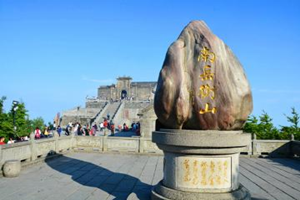 Mt.Hengshan
Mt.Hengshan
Hengshan, also known as Nanyue, with its main part situated in Nanyue District, Hengyang City, Hunan Province, is a renowned sacred site for both Taoism and Buddhism in China. The mountain and its surroundings are home to over 200 temples and Taoist monasteries. The Taoist history of Hengshan dates back to the Han Dynasty, while Buddhism began to spread during the Liang Dynasty. Each temple and monastery bears rich historical memories and cultural significance, offering you a spiritual cleansing and enlightenment through devout worship.
The mountain deity of Hengshan is Zhu Rong, the folk-revered Fire God. Commissioned by the Yellow Emperor (Huangdi) to guard Hengshan, he taught the people how to use fire, nurturing all living things. Hengshan also boasts numerous historical and cultural relics, such as the Martyrs Shrine, Rock Wear Poetry Forest, and the Jingang Dagoba.
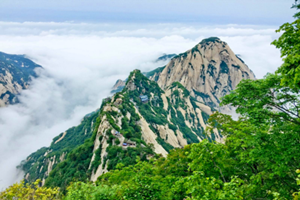 Mt.Hengshan
Mt.Hengshan
In addition to its profound cultural heritage, Mt. Hengshan also has magnificent natural scenery. The major peaks here include Huiyan Peak, Zhurong Peak, Zigai Peak, and Yuelu Mountain, with Zhurong Peak being the highest, standing at an altitude of 1,300.2 meters. Standing atop the mountain, you can overlook the splendid vistas below. The steep mountain ranges and overlapping peaks seem like a masterpiece carefully carved by nature. The misty clouds lingering in the mountains create a dreamlike atmosphere, making you feel as if you are immersed in a fairyland. Whenever the golden sunlight shines on the mountains in the early morning or at dusk, the radiance of the light fills you with awe and warmth.
Entering Mt. Hengshan is like stepping into a profound historical scroll. You can almost hear the ancients chanting poetry amidst the mountains, feeling their reverence and love for nature. You can behold the valued pieces of calligraphy or painting left behind by scholars and poets of past dynasties, savoring their profound reflections and insights on life. Here, you can engage in a dialogue with history, resonate with the wisdom of the sages, and sense the vastness, depth, and enduring legacy of Chinese culture. Let's embark on a journey into Mt. Hengshan together, embracing the gifts from nature and the inheritance of history!
Top Attractions to Visit
Victory Memorial Arch
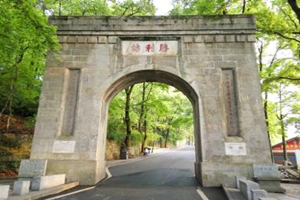 Victory Memorial Arch
Victory Memorial Arch
Victory Memorial Arch stands opposite the northern entrance of Nanyue Temple, approximately 30 meters away from the roadside. Resembling the Arc de Triomphe in Paris, albeit in a smaller scale, this arch was erected in 1947 under the auspices of the Nationalist Government to commemorate the victory of the Anti-Japanese War. It also serves as the gateway to Hengshan Mountain. Symbolizing the starting point for climbers and the beginning of success, this memorial arch has witnessed countless tourists' mountaineering expeditions, serving as the first scenic view of a journey to Nanyue.
Martyrs Shrine
The Martyrs Shrine was built to commemorate the fallen soldiers in the Anti-Japanese War, modeled after the Sun Yat-sen Mausoleum in Nanjing, covering an area of over 180 mu (a traditional Chinese unit of area, equivalent to about 12 hectares).
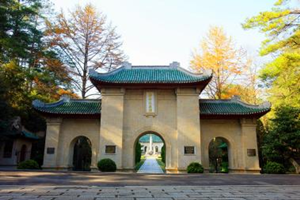 Martyrs Shrine
Martyrs Shrine
Inside the shrine, there are successively structures like memorial archway, memorial pavilion, and memorial hall, with the main body imitating wooden structures. The shrine houses 19 tombs of martyrs, making it the largest memorial cemetery for the fallen heroes of the Anti-Japanese War in China. The tombs are distributed around the shrine, creating a solemn and dignified atmosphere. Inside the shrine, there are also buildings, stone-carved artillery shells, and other landscapes. The monument, shaped like five giant artillery shells pointing straight to the sky, symbolizes the unity and solidarity of the Han, Manchu, Mongolian, Hui, and Tibetan ethnic groups in fighting the enemy with one heart and one mind, representing their resolute determination to rise up and resist.
The Martyrs Shrine of Nanyue is not only a historical monument but also a cultural treasure. It carries the indomitable and forward-looking spirit of the Chinese nation and serves as an important place to remember history and promote national spirit. Upon arrival, a sense of profound respect naturally arises.
Rock Wear Poetry Forest
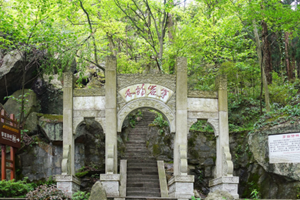 Rock Wear Poetry Forest
Rock Wear Poetry Forest
The Rock Wear Poetry Forest has both natural beauty and cultural landscapes. Nestled beneath the Xianglu Peak, this "Poetry Forest" was constructed in 1986, inscribed with over 50 poems dating back to the Tang and Song dynasties, extolling the grandeur of Nanyue Mountain. As you step up the stairs, you are greeted by a jumble of boulders and numerous caves of varying sizes. The caves are connected by stone-paved paths, with miscellaneous trees growing amidst the strange rocks, creating a lush canopy that is idyllic. In a word, this is an excellent place to appreciate the culture of Hengshan Mountain.
Zhurong Peak
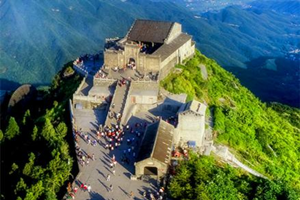 Zhurong Peak
Zhurong Peak
Zhurong Peak, as the main and tallest peak of Hengshan Mountain, standing at a lofty altitude of 1300.2 meters, is a landmark and the ultimate destination for visitors. Standing atop the peak, you can overlook the surrounding mountains and rolling sea of clouds, as if being immersed in a magnificent painting. Every dawn, when the sun rises, its radiance shines brightly, staining the entire peak in golden glory, leaving one in awe of nature's beauty. Moreover, Zhurong Peak is a sacred site for both Taoism and Buddhism, with the Zhurong Temple at its summit, where the Fire God Zhu Rong is worshipped. The numerous temples and Taoist monasteries on the mountain are significant embodiments of Hengshan's religious culture. The place is bustling with religious activities, attracting countless pilgrims to come and worship.
Lingzhi Spring
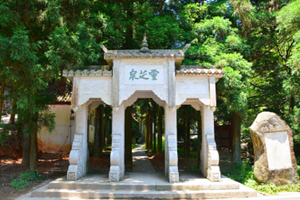 Lingzhi Spring
Lingzhi Spring
Lingzhi Spring, also known as "Meiling Spring," was a favorite spot for Soong Mei-ling during her stay in Nanyue, where she often came to relax and stroll, finding it unforgettable. It is an ideal place in Nanyue to enjoy sunbathing, which consists of a Fountain and a swimming pool. The Fountain collects mountain spring water and uses the counter-pressure of the height difference to spray it out, creating a spectacular sight. It is also a magical spring, with legends claiming it has the effect of prolonging life, curing illnesses, and strengthening the body. The spring water is clear and sweet, attracting many tourists to taste, making it a natural wonder of Mt. Hengshan.
Jingang Dagoba
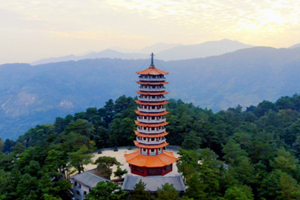 Jingang Dagoba
Jingang Dagoba
Jingang Dagoba, located on Ruiying Peak, the rear side of Nantai Temple on Mt. Hengshan, stands at an altitude of over 600 meters. It is the largest mountain-top Jingang Dagoba in areas south of the Yangtze River, embodying the profound heritage of Buddhist culture. With a height of 48 meters and an area of 233 square meters, this dagoba has nine floors and eight facades, with 256 steps winding up the walls. It is situated on a 24-meter granite base, adopting an eight-sided, nine-storied pavilion-style architecture resembling the Song Dynasty. The topmost floor, the ninth floor, enshrines the relics of Shakyamuni Buddha. Due to the sacred nature of the relics, they are generally only for worship and not for viewing. However, you can ascend to the eighth floor, overlooking the picturesque scenery of mountains, rivers, and pastoral landscapes, as well as a panoramic view of the urban area of Nanyue.
Travel Information
Location: Nanyue District, Hengyang, Hunan Province
Open hours: 07:30am--17:30pm (last entry at 17:00pm)
Recommended visiting hours: 1Day
Admission: RMB 110/person
Sightseeing car in the scenic area RMB 78 for round trip, RMB 44 for one-way
Note: The above information is for reference only. The specific prices and preferential policies may be adjusted according to the season, holidays and other factors, we recommend tourists to check the latest information through official channels before travel.
How to Get to Hengshan Scenic Area
>>>First you can take the bullet train to Hengyang City
From Changsha
Changsha South Station - Hengyang East Station
40 Minutes; RMB 81
From Yueyang
Yueyang East Station - Hengyang East Station
1.3 Hours; RMB 148
From Xiangtan
Xiangtan North Station - Hengyang East Station
1.3 Hours; RMB 93
>>> Then from Hengyang City by coach or train to Hengshan
Coach
Hengyang Central Bus Station - Hengshan Station
40 Minutes; RMB 15
Bullet Train
Hengyang East Station - Hengshan West Station
15 Minutes; RMB 17




































